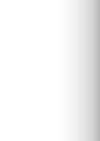

Hemati S A, Naseri B, Razmjou J. Reproductive performance and growth indices of the cotton bollworm, Helicoverpa armigera (Lepidoptera: Noctuidae) on various host plants. JCP 2013; 2 (2) :193-208
URL:
http://jcp.modares.ac.ir/article-3-11005-en.html
1- Department of Plant Protection, Faculty of Agricultural Sciences, University of Mohaghegh Ardabili, P. O. Box: 56199-11367, Ardabil, Iran.
Abstract: (4864 Views)
The effect of various host plants including chickpea (varieties Arman, Hashem, Azad and Binivich), common bean (variety Khomein), white kidney bean (variety Dehghan), red kidney bean (variety Goli), cowpea (variety Mashhad), and tomato (variety Meshkin) on the reproductive performance and growth indices of the cotton bollworm, Helicoverpa armigera (Hübner) was determined under laboratory conditions (25 ± 1°C, 65 ± 5% RH and a 16:8 h light:dark photoperiod). The highest rate of gross fecundity, gross fertility, net fecundity, net fertility, mean daily eggs and mean daily fertile eggs were observed on chickpea Arman (2947.8 ± 7.8, 2933.0 ± 7.8, 2404.2 ± 7.1, 2392.2 ± 7.1, 170.9 ± 0.4, and 170.1 ± 0.4 eggs female-1, respectively), whereas the lowest values of these parameters were on tomato Meshkin (847.5 ± 9.2, 673.8 ± 7.3, 225.5 ± 2.6, 179.3 ± 2.1, 67.9 ± 0.7 and 54.3 ± 0.5 eggs female-1, respectively). The development index of overall immature stages varied from 1.10 to 1.57, with the minimum on tomato Meshkin and the maximum on chickpea Arman. Also, the fitness and standardized insect-growth indices were highest (0.349 ± 0.009 and 0.058 ± 0.001 gr day-1) and lowest (0.052 ± 0.001 and 0.013 ± 0.000 gr day-1) on chickpea Arman and tomato Meshkin, respectively. The Weibull model sufficiently described the shape of the survivorship curve of adult H. armigera from life-table data. A significant fit was obtained with the Weibull model for H. armigera in all experimental host plants. The results of reproductive performance, growth indices and the cluster analysis showed that tomato Meshkin was partially resistant to H. armigera.
Received: 2012/11/17 | Revised: 2013/07/17 | Accepted: 2013/04/13 | Published: 2013/04/16
























































